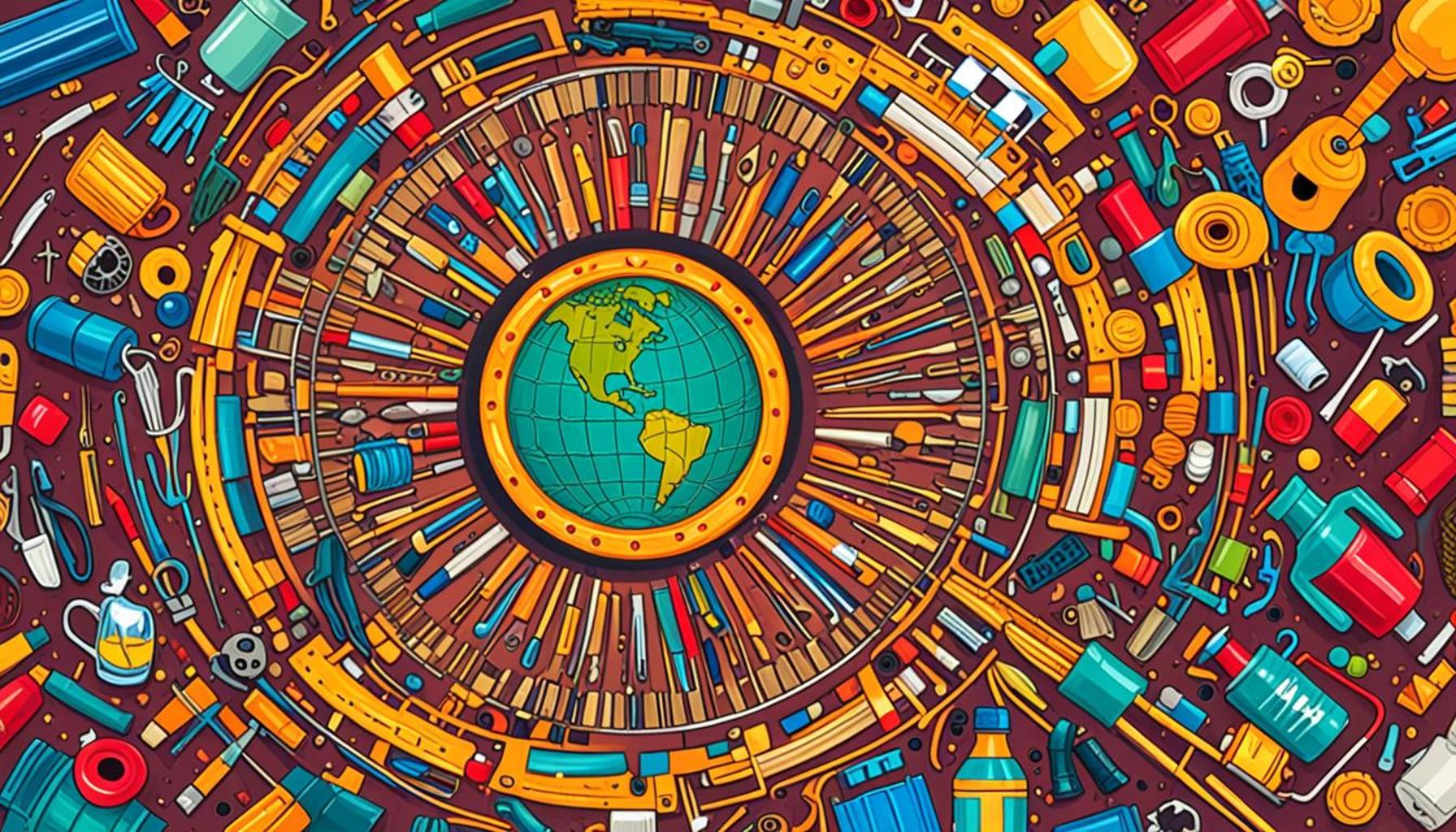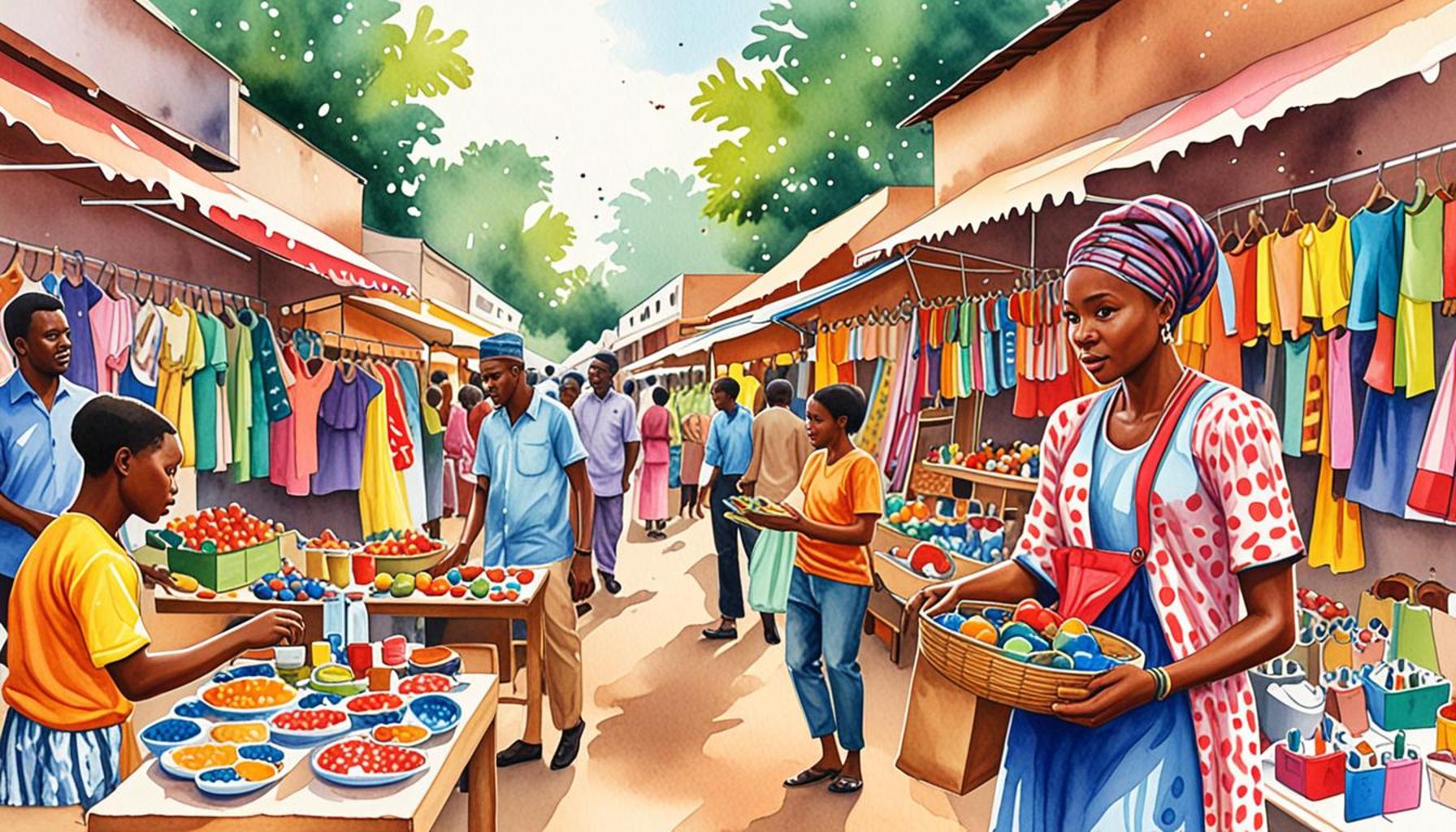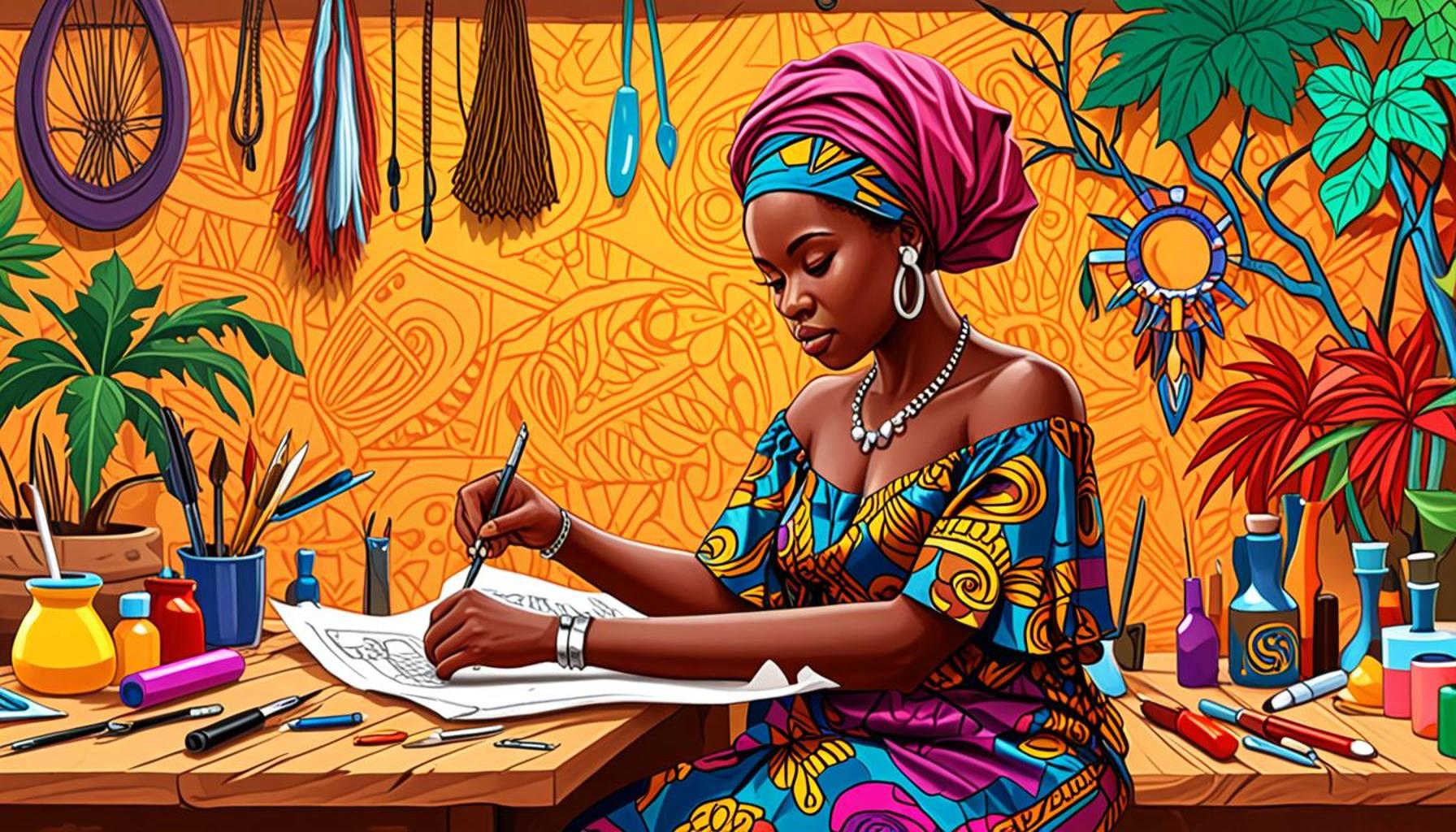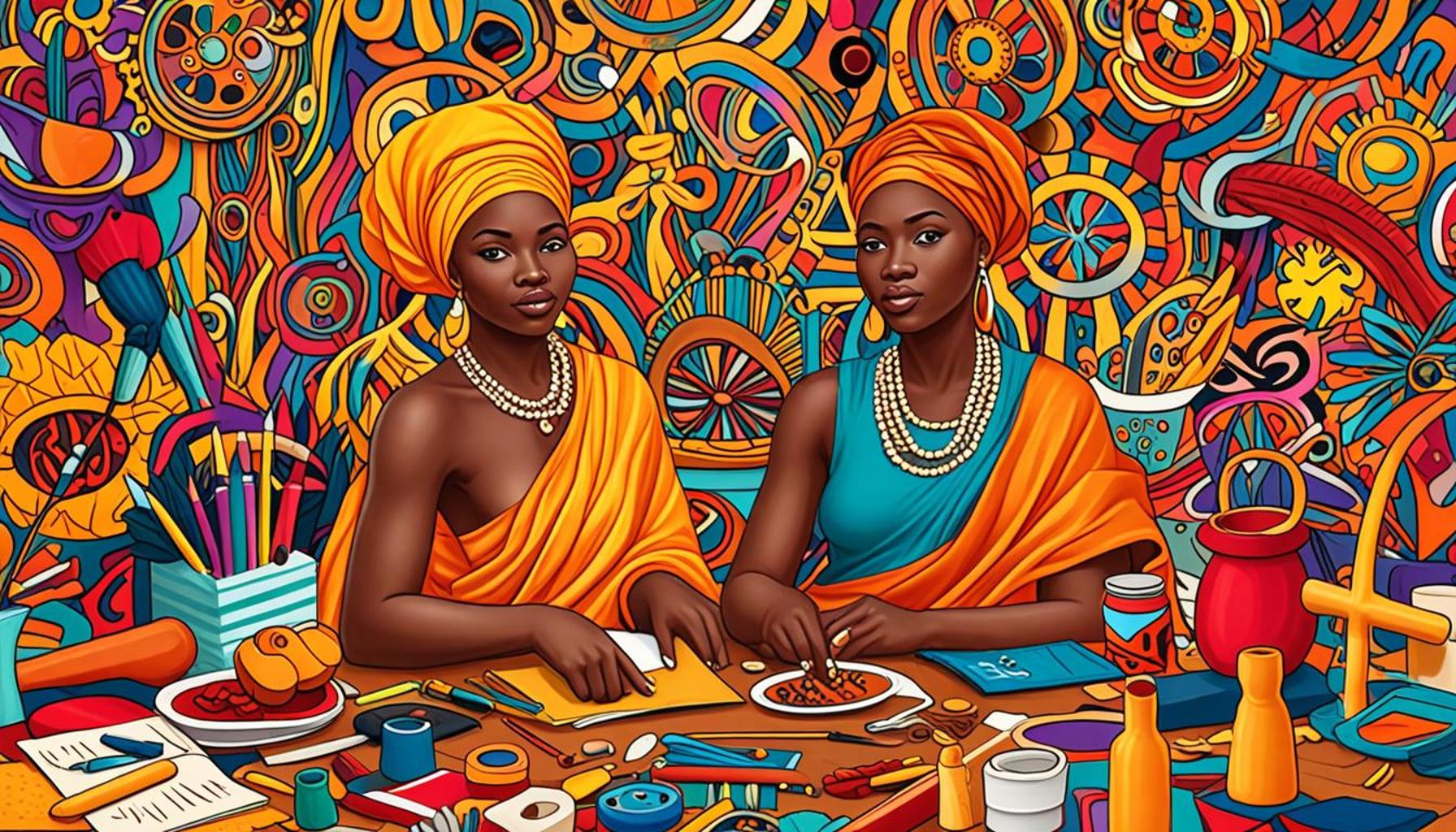Craftsmanship and the Circular Economy: Innovations that Transform Waste into Art in Nigeria

Waste Transformed into Cultural Identity
In the rich tapestry of Nigerian culture, the blending of contemporary art with eco-consciousness is becoming a powerful movement. As communities grapple with the challenges presented by pollution and waste management, innovative artisans are turning discarded materials into breathtaking masterpieces. This transformation represents not just a method of recycling, but also a profound celebration of local narratives and identities.
Plastic Waste Art
One of the most striking examples of this movement is the use of plastic waste in artistic creations. Artisans are ingeniously crafting sculptures and installations from discarded plastic bottles, which have become an emblem of environmental degradation in urban areas like Lagos. Notable exhibitions have showcased towering installations made entirely from these bottles, capturing attention and sparking dialogue about pollution. Projects such as the “Recycled Plastic City” initiative demonstrate how artists can play a pivotal role in environmental awareness, while transforming waste into visually impactful works of art.
Metal Recyclables
The potential of metal recyclables is another avenue through which creativity flourishes. Traditional iron and aluminum, often overlooked, are being repurposed into exquisite furniture and decor. Artisans in regions like Kano are leading the charge, using welding techniques to create designs that are both functional and artistic. For instance, intricate metal sculptures depicting local wildlife not only serve as stunning decor but also help tell stories of Nigeria’s biodiversity, encouraging conservation through art.
Textile Recycling
In the realm of fashion, textile recycling has emerged as a trend that marries sustainability with style. Fashion designers are increasingly utilizing fabric scraps to create unique clothing lines that are not only trendy but also eco-friendly. Events such as the Lagos Fashion Week have featured collections made entirely from upcycled materials, showcasing the creativity and resourcefulness of Nigerian designers. This practice not only reduces textile waste, a significant environmental concern, but also nurtures local economies by promoting a circular fashion industry.
The importance of these creative pursuits extends beyond aesthetic value. They serve as vital narratives that weave together local culture, community engagement, and environmental consciousness. Each piece of art tells a story—whether it is a tale about the artist’s heritage, a commentary on societal issues, or a call to action regarding sustainability. By redefining waste as a medium for self-expression, Nigeria is not only addressing environmental issues but also fostering a sense of ownership and pride in cultural identity.

As the trend continues to grow, it is clear that Nigerian artisans are not merely creators; they are visionaries paving the path for a cleaner, more sustainable future. This fusion of art and sustainability is not just a local initiative; it becomes a model for global practices, inspiring movements beyond Nigeria’s borders. The world is watching as Nigeria demonstrates how creativity can catalyze change and foster a deeper connection to the environment.
CHECK OUT: Click here to explore more
Bridging Tradition and Modernity
The renaissance of craftsmanship in Nigeria is emblematic of a broader shift toward sustainable practices and the circular economy. Traditional artisans, well-versed in age-old methods, are merging these skills with contemporary design principles to address pressing environmental challenges. This harmonious blending of past and present enables artisans to not only preserve cultural heritage but also to engage with modern environmental issues, all while fostering a vibrant creative economy.
The Rise of Eco-Conscious Artisans
More than just artists, these eco-conscious artisans are social innovators who understand the potential of waste materials as a resource. By adopting practices that emphasize the reuse and repurposing of materials, they are creating pieces that resonate with local and global audiences alike. A noteworthy initiative is the Trash to Treasure program, which collaborates with local artists to transform urban waste into stunning works of art. This program not only minimizes waste but also generates income for artists involved, exemplifying how social entrepreneurship can thrive within the circular economy.
Local Workshops and Community Engagement
Across Nigeria, community workshops have sprung up as spaces where creativity is ignited and skills are shared. In these collaborative environments, seasoned artisans impart their knowledge to younger generations. Such workshops emphasize the significance of sustainable craftsmanship while instilling a sense of responsibility toward the environment. Participants learn to create art from materials that would otherwise contribute to landfill overflow, including:
- Plastic bottles
- Old tires
- Fabric waste
- Used wood
This knowledge-sharing not only empowers individuals but also strengthens community ties, fostering a culture of appreciation for recycling and upcycling. Exhibitions showcasing their work further illustrate how innovative ideas can flourish through collaboration and shared vision, creating a vibrant local art scene that emphasizes sustainability.
Incorporating Indigenous Techniques
What sets Nigeria apart in this movement is the incorporation of indigenous techniques, which provide a unique flavor to contemporary art made from waste. Many artisans draw inspiration from traditional material usage, such as weaving, carving, and pottery, to create modern interpretations that reflect Nigeria’s rich artistic legacy. These art pieces not only celebrate cultural diversity but also tell stories of resilience, heritage, and sustainable futures. The so-called “cultural recyclers” are paving the way for an art form that is distinctively Nigerian, while simultaneously contributing to the global discourse on sustainability.
Ultimately, the melding of craftsmanship and the principles of the circular economy is transformative. It invites both artisans and consumers to reconsider their relationship with waste and embrace an ethos that values creativity, sustainability, and cultural identity. As Nigerians continue to innovate and create, they are proving that art can be a vehicle for change, encouraging a more sustainable future while honoring the past.
| Category | Benefits |
|---|---|
| Sustainable Materials | Utilizes recyclable waste, reducing environmental impact and promoting sustainability. |
| Economic Opportunities | Creates job opportunities and encourages local craftsmanship, fostering community growth. |
As Nigeria embraces the principles of the circular economy, artisans are increasingly turning waste materials into valuable artwork and functional items. This transformation not only highlights the country’s rich cultural heritage but also promotes environmental responsibility. For instance, discarded plastics are ingeniously crafted into stunning sculptures and household items, showcasing an adept fusion of creativity and sustainability. The rise of the circular economy approach in Nigeria has seen a wave of innovative workshops and community initiatives. These programs motivate local artists, offering hands-on training on how to work with eco-friendly materials. By emphasizing the significance of recycling, these artisans are not only addressing waste management challenges but also making statements about environmental rights. Moreover, this movement contributes to the economy by establishing new market niches and inspiring a generation of eco-conscious consumers who value the artistry and stories behind their purchases. Through these innovative efforts, Nigeria is making substantial strides towards a future that honors both the environment and its artistic legacy.
LEARN MORE: This related article may interest you
Creative Collaborations Across Sectors
The dynamism of craftsmanship in Nigeria is further amplified by innovative collaborations across various sectors. Artists, designers, and environmental activists are forging partnerships that not only elevate their individual practices but also contribute substantively to community resilience and sustainability. For instance, organizations like Art and the Environment unite visual artists with environmental scientists to create installations that address waste management challenges. These collaborative projects showcase the aesthetic potential of recycled materials while simultaneously educating the public about environmental issues.
The Role of Technology in Craftsmanship
The infusion of technology into traditional craftsmanship is transforming how artisans in Nigeria approach their work. Digital tools, such as 3D modeling and laser cutting, allow for precise designs that can enhance the functionality and beauty of art created from waste. Local tech hubs are training artisans to integrate these modern techniques into their practices. For example, some artists are using digital fabrication technologies to create intricate patterns from discarded plastics, leading to eye-catching installations that tell compelling stories about consumption and waste.
Social Enterprises and Economic Impact
Beyond artistry, the social enterprise model is redefining the economic landscapes of communities engaged in waste art. Numerous initiatives have emerged, such as Recyclart Nigeria, which empowers local artisans by providing them with the necessary tools and training to convert waste into marketable products. These enterprises not only support the livelihoods of artisans but also extend their reach in local and international markets. The economic impact is profound; artisans who were once relegated to informal markets are now being recognized in formal sectors, expanding their income potential and ensuring the sustainability of their crafts.
Showcasing Waste Art on Global Platforms
As Nigerian artisans gain recognition for their innovative creations, opportunities are arising for them to showcase their work on global platforms. Events such as the Lagos Art Biennial include exhibitions dedicated to sustainability and waste art, attracting attention from international collectors, curators, and art enthusiasts. This visibility not only enhances market access for artisans but also fosters a greater appreciation for the narrative behind their work. Their pieces often become conversation starters at these international exhibitions, prompting discussions about global waste issues that resonate far beyond Nigeria’s borders.
Furthermore, the rise of online platforms has enabled artisans to sell their creations directly to global customers. Social media channels and digital marketplaces specifically geared toward sustainable art are helping to elevate the profile of Nigerian craftsmanship, allowing artisans to narrate their stories and showcase the beauty inherent in waste transformation to a worldwide audience.
The intersection of craftsmanship, the circular economy, and social enterprise in Nigeria reveals a landscape rich with innovation. As traditional artisans embrace modern techniques and explore sustainable practices, they craft not just beautiful art but also meaningful change in their communities and beyond.
YOU MAY ALSO LIKE: Read read another article
Conclusion
The vibrant interaction between craftsmanship and the circular economy in Nigeria is a testament to the power of creativity in combating environmental challenges. As artisans leverage innovative techniques and collaborate with diverse sectors, they are not only transforming waste into captivating art pieces but are also reshaping narratives around sustainability and resourcefulness. The initiatives led by organizations like Recyclart Nigeria exemplify how art can serve as a vehicle for social enterprise, empowering local communities and re-establishing economic stability.
Furthermore, the incorporation of technology into traditional practices breathes new life into craftsmanship, enabling artisans to elevate their work and expand their market presence, both locally and internationally. The growing visibility of Nigerian artists on global platforms, highlighted by events such as the Lagos Art Biennial, serves to unify these efforts, connecting audiences with the stories behind each piece while fostering dialogue about pressing global waste issues.
As Nigeria embraces these transformative innovations, it stands at the forefront of a holistic approach to sustainability, where art transcends its aesthetic value to become an instrument of change. This burgeoning movement not only champions the fight against waste but also establishes Nigeria as a pivotal player in the global conversation on craftsmanship and environmental stewardship. The road ahead is filled with promise, inviting both creators and consumers to reconsider their impact on the planet and to celebrate the ingenious ways in which waste can indeed inspire beauty, resilience, and sustainability.


